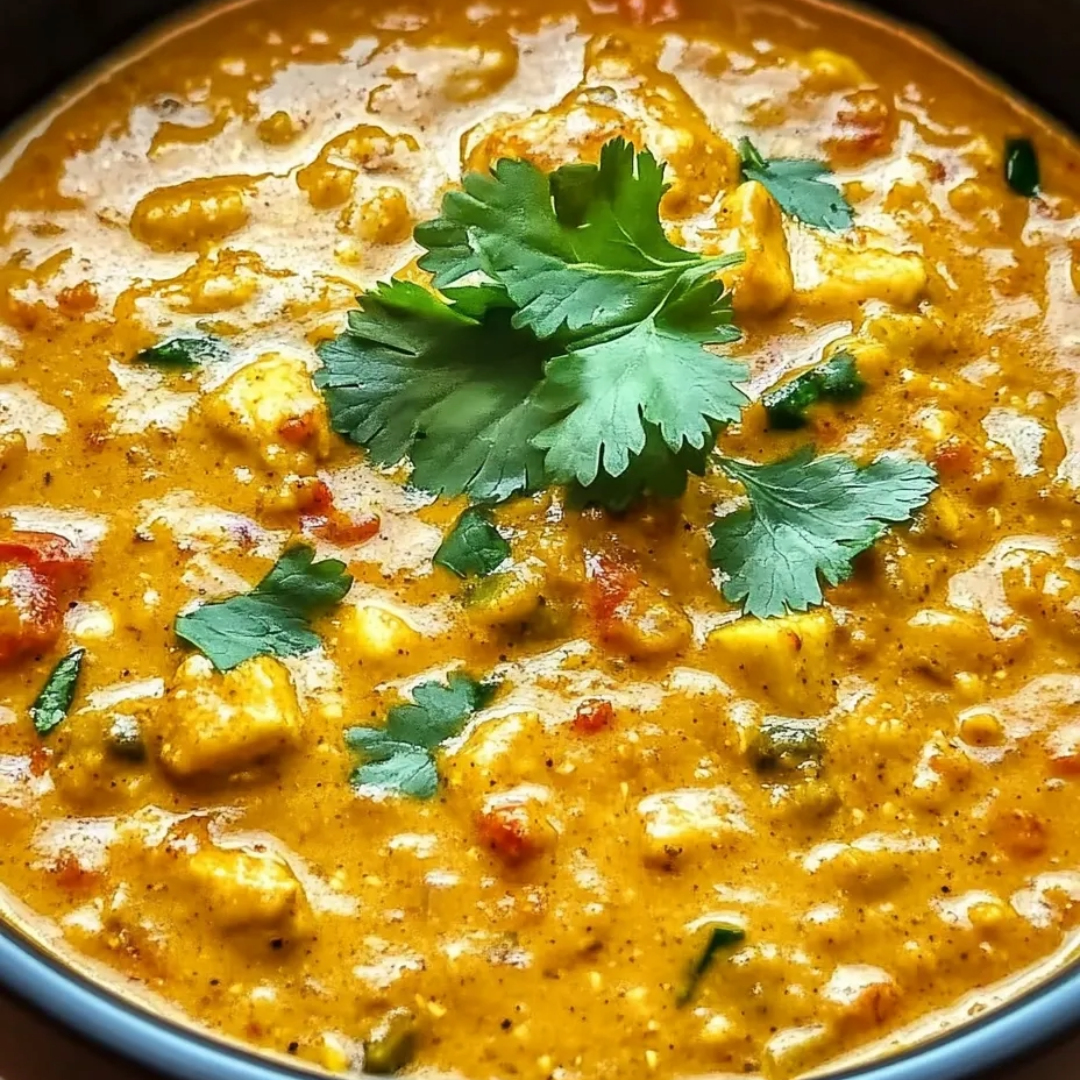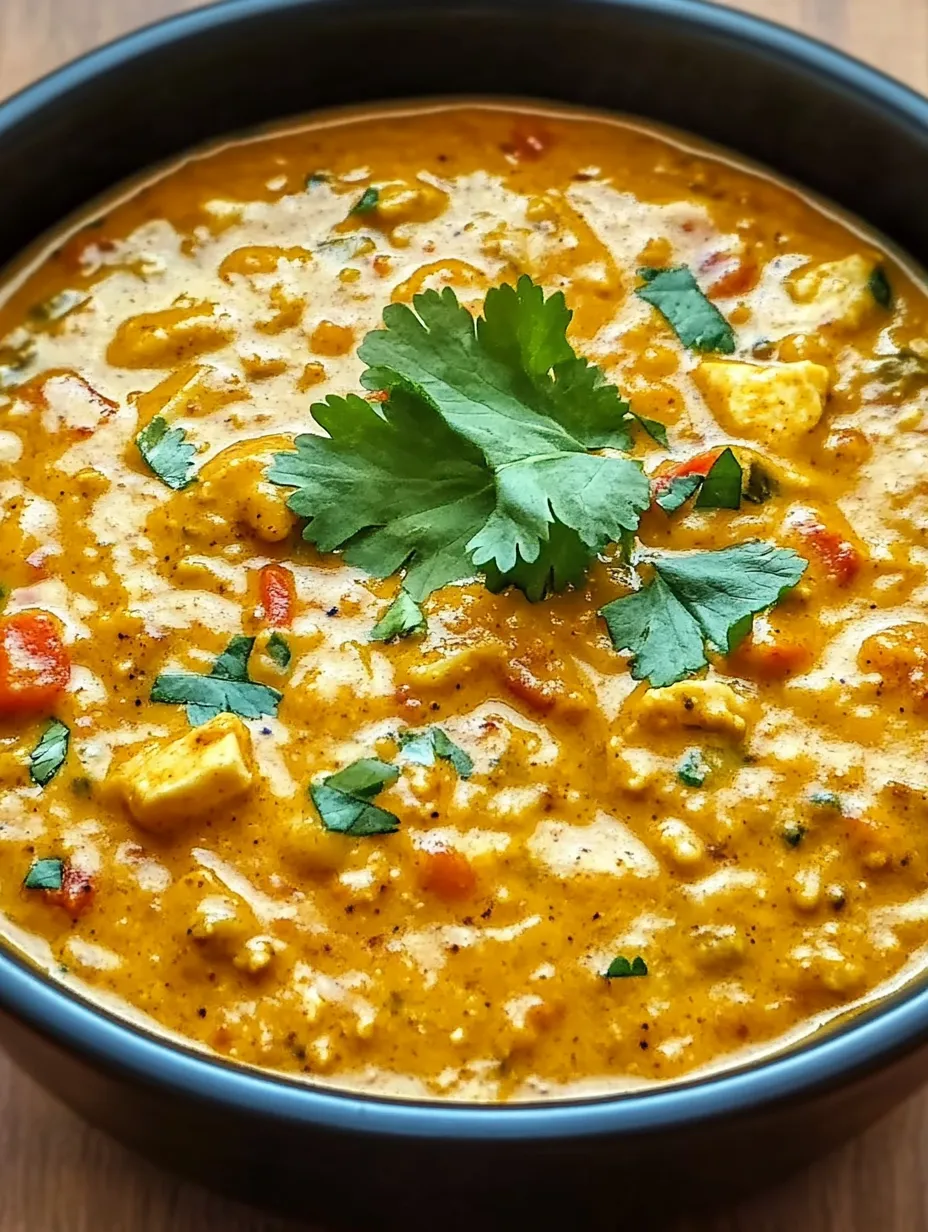 Pin it
Pin it
Mulligatawny soup warms you from the inside out with its rich blend of aromatic spices, hearty lentils, and fresh vegetables. This Indian-inspired dish brings together a tapestry of flavors that create something truly magical. The combination of curry, ginger, and sweet apple creates depth and complexity that makes each spoonful an adventure for your taste buds.
I first made this soup during a particularly cold winter when I was craving something different from my usual rotation. The kitchen filled with the most incredible aroma as it simmered, and my family wandered in one by one, asking what that wonderful smell was. Since then, it's become our go-to comfort food when temperatures drop. My daughter, who typically avoids anything with the word "curry," asks for seconds every time!
Ingredients You'll Need
- Olive oil: Creates the flavor foundation for sautéing our vegetables. Look for extra virgin for best flavor.
- Onion: Provides sweetness and depth. Yellow onions work perfectly, but red onions add a nice complexity too.
- Carrots and celery: The classic mirepoix vegetables that build layers of flavor. Dice them evenly for consistent cooking.
- Fresh garlic: Brings that unmistakable aromatic quality. Always opt for fresh over pre-minced for the brightest flavor.
- Curry powder: The star spice blend that gives Mulligatawny its distinctive character. Different brands vary in heat and flavor profile, so find one you love.
- Ground ginger: Adds warmth and a subtle zing. If you have fresh ginger, even better!
- Cumin: Provides earthy notes that complement the curry beautifully.
- Diced tomatoes: Adds acidity and natural sweetness. Fire-roasted varieties bring extra depth.
- Broth: Creates the soup base. Use chicken for traditional flavor or vegetable broth for a vegetarian version.
- Lentils: Red or yellow lentils break down during cooking, creating a naturally creamy texture while adding protein and fiber.
- Apple: This surprise ingredient adds a subtle sweetness that balances the savory spices perfectly.
- Coconut milk: Creates silky richness without dairy. Use full-fat for the most luxurious texture.
 Pin it
Pin it
How To Make Mulligatawny Soup
- Step 1:
- Begin by heating olive oil in a large, heavy-bottomed pot over medium heat. The pot should be spacious enough to accommodate all ingredients with room for stirring. A Dutch oven works beautifully here, as its even heat distribution prevents scorching.
- Step 2:
- Add your diced onion, carrots, and celery to the hot oil, stirring occasionally to prevent sticking. Allow these aromatics to soften slowly, about 5-7 minutes, until the onions become translucent and start to release their sweet flavor. This gradual cooking builds a foundation of flavor that will permeate the entire soup.
- Step 3:
- When the vegetables have softened, add the minced garlic, curry powder, ground ginger, and cumin. Stir continuously for about one minute, coating the vegetables in the spices. The heat will activate the aromatic oils in these spices, releasing their full flavor potential. Your kitchen should now be filled with an intoxicating aroma that hints at the deliciousness to come.
- Step 4:
- Pour in the undrained diced tomatoes, followed by the broth. The acidity from the tomatoes helps to deglaze the pot, scraping up any flavorful bits stuck to the bottom. Add the rinsed lentils and diced apple, stirring to combine everything thoroughly. Bring this mixture to a gentle boil, watching for the first bubbles to break the surface.
- Step 5:
- Once boiling, reduce the heat to low and cover the pot with a tight-fitting lid. This creates a gentle, steamy environment that allows the lentils to cook evenly while the flavors meld together. Simmer patiently for 30-35 minutes, checking occasionally to ensure nothing is sticking to the bottom of the pot. The lentils should become tender, almost melting into the soup to create a naturally thick consistency.
- Step 6:
- After the lentils have softened completely, stir in the coconut milk. The transformation is immediate—watch as the soup takes on a silky, creamy appearance. Season thoughtfully with salt and pepper, tasting as you go to achieve the perfect balance. Remember that flavors intensify as the soup sits, so err on the side of caution with salt.
- Step 7:
- Ladle the hot soup into bowls and garnish generously with fresh herbs. The vibrant green of chopped parsley or cilantro not only adds visual appeal but also brings a bright, fresh counterpoint to the rich, spiced soup. For an extra touch of authenticity, a dollop of yogurt and a few crusty pieces of naan bread on the side complete the experience.
The beauty of Mulligatawny lies in its harmonious blend of flavors. The earthy lentils provide substance, while the curry and warm spices give depth and character. The apple might seem unusual, but it provides just enough sweetness to round out the savory elements, creating a perfectly balanced spoonful every time.
This soup embodies what I love most about cooking—transforming simple ingredients into something greater than the sum of its parts. The lentils break down during cooking, naturally thickening the soup while adding protein and fiber, making it satisfying enough to serve as a main course.
What truly makes Mulligatawny special is how it improves with time. If you can exercise patience, make it a day ahead and reheat gently. You'll find the flavors have deepened and married even more beautifully, creating an even more complex and satisfying experience.
I've found that the type of curry powder you use dramatically impacts the final flavor profile. My family prefers a mild Madras curry powder, but when cooking just for my husband and me, we enjoy a spicier version with more heat. Experimenting with different curry blends is half the fun of making this recipe your own.
Mulligatawny soup has become our Sunday afternoon tradition during colder months. I'll start it simmering after lunch, and by dinner time, the whole house smells incredible. There's something deeply satisfying about nourishing loved ones with a meal that's both healthy and comforting at the same time.
The tradition of soups as healing food spans cultures worldwide, and Mulligatawny certainly lives up to that reputation. During cold and flu season, I often make a large batch to have on hand. The warming spices seem to have an almost medicinal quality—soothing a scratchy throat and providing comfort when it's needed most.
 Pin it
Pin it
My final thought on Mulligatawny soup is that it represents the best kind of cooking—approachable, adaptable, and deeply satisfying. Whether you're cooking for one or hosting a dinner party, this soup delivers comfort and nourishment in equal measure. There's something magical about watching someone take their first spoonful and seeing their eyes light up with surprise and delight at the complex flavors. That moment of connection through food is what makes all the chopping, stirring, and simmering absolutely worthwhile.
Frequently Asked Questions
- → What does Mulligatawny soup taste like?
- It has a warm, rich flavor with curry spices, a hint of sweetness from apples, and creaminess from coconut cream. The lentils give it a hearty texture.
- → Can I make this soup vegetarian?
- Absolutely! Simply omit the chicken, use vegetable broth instead of chicken broth, and add extra vegetables like celery or bell peppers.
- → Where does Mulligatawny soup come from?
- It originated during British colonial rule in India. The name comes from Tamil words meaning 'pepper water,' though the modern version is much creamier.
- → Can I freeze leftover Mulligatawny soup?
- Yes, it freezes well for up to 3 months. Cool completely before freezing, and add fresh herbs after reheating for the best flavor.
- → What can I serve with Mulligatawny soup?
- It pairs perfectly with naan bread, crusty sourdough, or a simple side salad. For a more traditional approach, serve with basmati rice.
